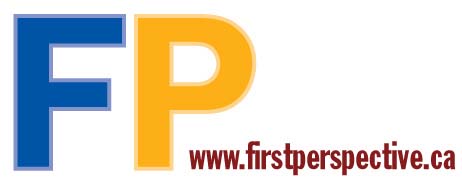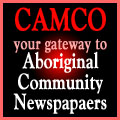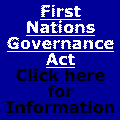|
With the title of Aboriginal Capital of Canada firmly entrenched, Winnipeg has long led the way among major metropolitan cities in experiencing the nation's complex and often uneasy relationship with it's aboriginal citizens.
Indeed, recent census figures show that the Aboriginal population of the city now accounts for at least 60,000 people-with projections of it topping 100,000 by 2020- making it inevitable that civic politicians would finally be forced to formulate a plan to deal with the potential implications-positive and negative-of that reality.
And Mayor Glen Murray's recently unveiled draft aboriginal strategy First Steps: Municipal Aboriginal Pathways, according to its foreword, attempts to do just that. (See Page 10 for direct excerpts from the document)
The plan lays out five separate pathways that the city intends to pursue in order to "embrace" and "encourage" greater aboriginal participation in overall civic life.
These 'pathways" are designated to address issues of employment, safety, economic development, quality of life and outreach and education.
Initiatives such as creating aboriginal internships, employment networks, an aboriginal youth ambassador program, aboriginal economic development partnerships, aboriginal housing development and instituting aboriginal cultural awareness training are the initial steps Murray has said will lead to satisfying legitimate and longstanding grievances among urban aboriginal people for greater civic equality, participation and representation.
The city's aboriginal strategy falls under the mayor's much vaunted Plan Winnipeg 2020 policy umbrella, a document that suggests the city has developed an integrated and focused plan of attack to address a host of municipal priorities from basic infrastructure renewal, increased transportation efficiency, administrative stream-lining, the revitalization of its downtown core and enhancing the potential for the expansion of it's corporate tax base and to "promote self-reliant aboriginal communities.
The objectives are summarized in Plan Winnipeg 2020 "Vision" statement: "To be a vibrant and healthy city which places its highest priority on quality of life for all its citizens."
Southern Chiefs Organization leader Margaret Swan has responded enthusiastically to the city's statement of intent contained in its aboriginal strategy plan and has offered to work directly with the city in ensuring its implementation.
"I want to applaud the mayor and the executive policy committee for their vision, courage and determination in offering this draft strategy for urban Aboriginal citizens that call Winnipeg home.
"I have briefly reviewed the draft strategy and am impressed with its strategic commitments to address several challenges facing Winnipeg's aboriginal community in a respectful meaningful way," she said.
And several members of urban aboriginal organizations, including Aboriginal Council president Wayne Helgason, have also lauded the draft strategy.
However response at the street level both among aboriginal and non-aboriginal people ha s been more cautious and in some cases extremely cynical. (Also see Page 10 for written response to the city's strategy from The Canadian Taxpayers Federation)
"There's no plain talk in any of Murray's grandiose plans or strategizing," complains Winnipeg core area businessman Andrew Moar, who was quick to point out his Metis roots. "Platforms, pathways, strategies, visions, it's all a bunch of B.S dressed up to look like something it's not. You can't ever get to the root of a problem without the people in the community being able to have a say in this and what's going to be done.
Moar says that many of the civic aboriginal leaders who had direct input in shaping the goals and objectives of the strategy have been the very people who have impeded the type of frank examination of the issues required to really address the underlying problems of aboriginal relations with the rest of the city's population.
"Right now it's politically correct for aboriginal people to be angry, to say they hate the whites or to blame the rest of the city for all their problems. Now I know from living in this city for nearly half-a-century that people don't take well to hearting this all the time. This plan of Murray's pretty much says that they swallowed everything they were told.
"The trouble is our people have to take some responsibility for their actions and how that's contributed to some really bad feelings against us. But this plan will never work if those that have these negative feelings can't even lay them out. I mean how are we ever going to get the real support from the rest of Winnipeg if behind all those faces is a lot of misunderstanding and resentment."
It's a grassroots analysis that has wide currency even among some younger educated members of the aboriginal community.
"Sure the stated ideals of the strategy, you can't argue with that. But they're based on perpetuating yet another stereotype that non-aboriginal Winnipeggers are the only ones to have to change their attitudes and mindset," said Patricia Keemansick, an Ojibway mother of two, who moved to Winnipeg to continue her education 10 years ago. "I work with lots of great people, Filipinos, Europeans, you name it. We have the same concerns and worries about our children, our jobs, our future and our safety and they have never ever shown one ounce of racism towards me and it's at that level that this discussion should have taken place among ordinary people who work together, go to school together, play together and eat together as neighbours.
"Instead we had politicians and the so-called elite meeting and consulting and using all the rhetoric that they use to keep this idea in aboriginal people that everybody is out to get us somehow and in non-aboriginal people that we need special treatment.
"Well we don't. All people need to do is be treated equally not given special treatment. I see too many of our people who think they're entitled to special treatment and that life isn't hard for anyone who isn't aboriginal. Well they're wrong. Until a real and frank discussion happens among the citizens of this city this strategy is only going to create more dissension and difficulty for everyone."
|
|
Excerpts from
Winnipeg's First Steps:
Municipal Aboriginal Pathways
Foreword
Of the many perceptions of Winnipeg's Aboriginal community, two images stand out. The first image relates to the North American Indigenous Games (NAIG) which Winnipeg hosted in 2002. More than just a sporting event, NAIG emerged as a powerful symbol of the renaissance occurring in Aboriginal communities across the continent. For Winnipeg's Aboriginal citizens, NAIG was not only an organizational success but also an inspirational sign of cultural rebirth and renewal.
First Steps: Municipal Aboriginal Pathways
The second image stands in stark contrast to the first. It relates to the grim reality in Winnipeg's core area where members of the city's Aboriginal community struggle with the consequences of addiction, poverty, and homelessness. If the image of NAIG represents a future filled with hope and promise, then the desperate face of despair on the streets of downtown Winnipeg offers a sad reminder of past wrongs and missed opportunities.
That these two images can exist side by side in 2003 indicates that economic challenges still exist for Winnipeg's Aboriginal citizens. We are, however, not without hope and inspiration. The success of NAIG demonstrates what can happen when Aboriginals and non-Aboriginals work together toward a shared goal.
Fortunately, we have a solid foundation upon which to build. Over the years, the City has developed a broad range of services and programs that promote public safety, housing, community health, sport and recreation, and cultural heritage activities for Winnipeg's Aboriginal citizens. To a degree all have met their objectives but the relative success of each initiative simply reinforces the need for more concerted effort. Moreover, the evidence suggests the needs of Winnipeg's Aboriginal community will continue to evolve. As recent Census of Canada data suggests, Winnipeg's Aboriginal population has grown by almost 9,000 people (or 21 per cent) since 1996. Projections indicate that this upward trend will continue into the future so that by 2020, Winnipeg's Aboriginal population may well exceed 100,000 people. First Steps: Municipal Aboriginal Pathways represents the City of Winnipeg's explicit commitment to address these challenges. It defines a policy framework-based on a number of key principles-to open the door to a new era of co-operation between the City and Winnipeg's Aboriginal community. The report argues that through effective partnerships and the creative use of municipal tools and levers the City can identify pathways to promote sustainable community development to build a better future for Winnipeg's Aboriginal citizens. The timing is right. The growth of the city's Aboriginal population is only one component of a dramatic demographic shift that will transform Winnipeg's workforce within a generation. Over the next few decades Winnipeg will need more people with highly developed skills and abilities in order to compete in the global marketplace and maintain our standard of living. At this critical juncture in our history, we have been presented with a tremendous opportunity to create a progressive new partnership with our Aboriginal community to secure and enhance the quality of civic life for all our citizens. This report presents a policy framework for generating a new era of sustained commitment by the City of Winnipeg to Aboriginal issues so that we may truly, as the Royal Commission on Aboriginal Peoples observed, "live together in peace, harmony, and mutual support."
Pathways
Employment:
The City of Winnipeg will undertake initiatives to enhance the participation of Aboriginal people in both the civic and community workforce.
Strategic Initiatives:
• Aboriginal Internships
• Youth in Community Services Program
• Aboriginal Employment Network
Safety:
The City of Winnipeg will build on current public safety programs and services to promote the personal and collective security of Winnipeg's Aboriginal community.
Strategic Initiatives:
• Aboriginal Youth Ambassador Program
• Aboriginal Liaison Office
• National Law Enforcement Aboriginal and Diversity Network
Economic Development:
The City of Winnipeg will utilize municipal tools to develop partnerships that promote economic development projects.
Strategic Initiatives:
• Aboriginal Economic Development Partnerships
• Municipal Services and Development Agreements
• Aboriginal Culture and Heritage Tourism
Quality of Life:
The City of Winnipeg will enhance programming and services to support Aboriginal recreational and wellness activities.
Strategic Initiatives:
• Multi-Purpose Community Facility
• Winnipeg Aboriginal Sport Achievement Centre
• Aboriginal Housing
Outreach and Education:
The City of Winnipeg will develop outreach and education initiatives that promote cross-cultural understanding and improve access to information about civic services.
Strategic Initiatives:
• Aboriginal Pathways Community Consultation
• Aboriginal Cultural Awareness Training
• Urban Aboriginal Transition Network
|
|







